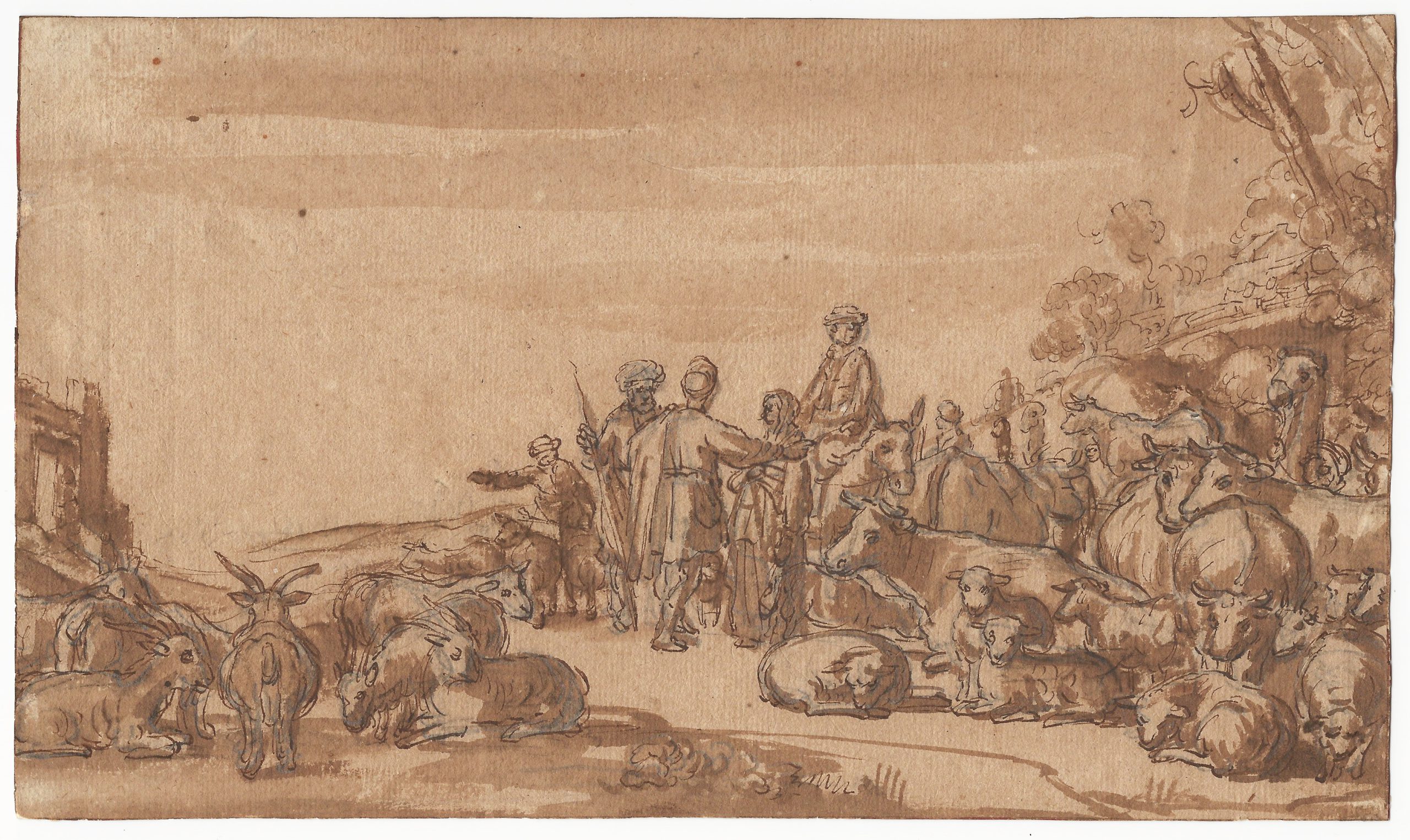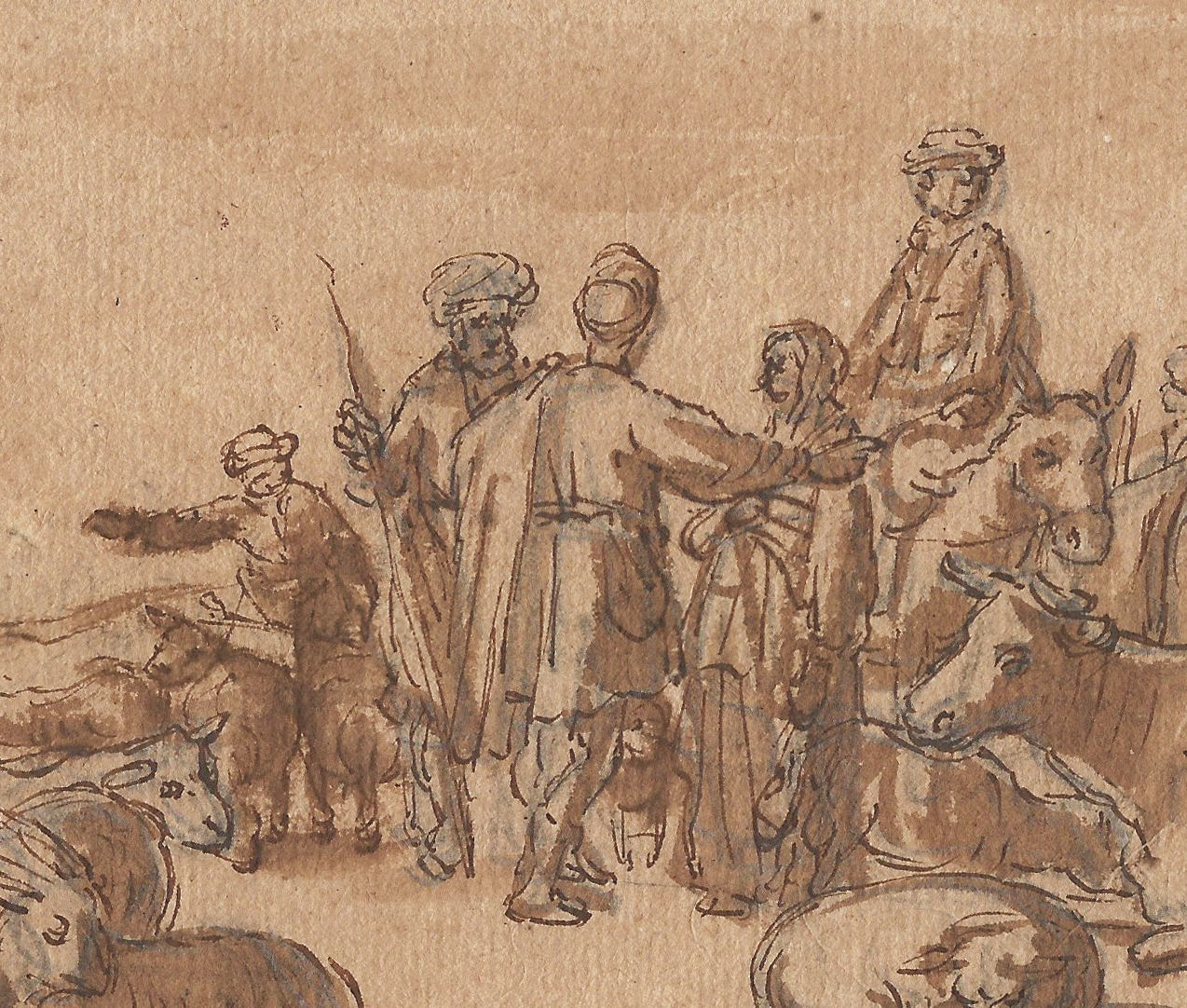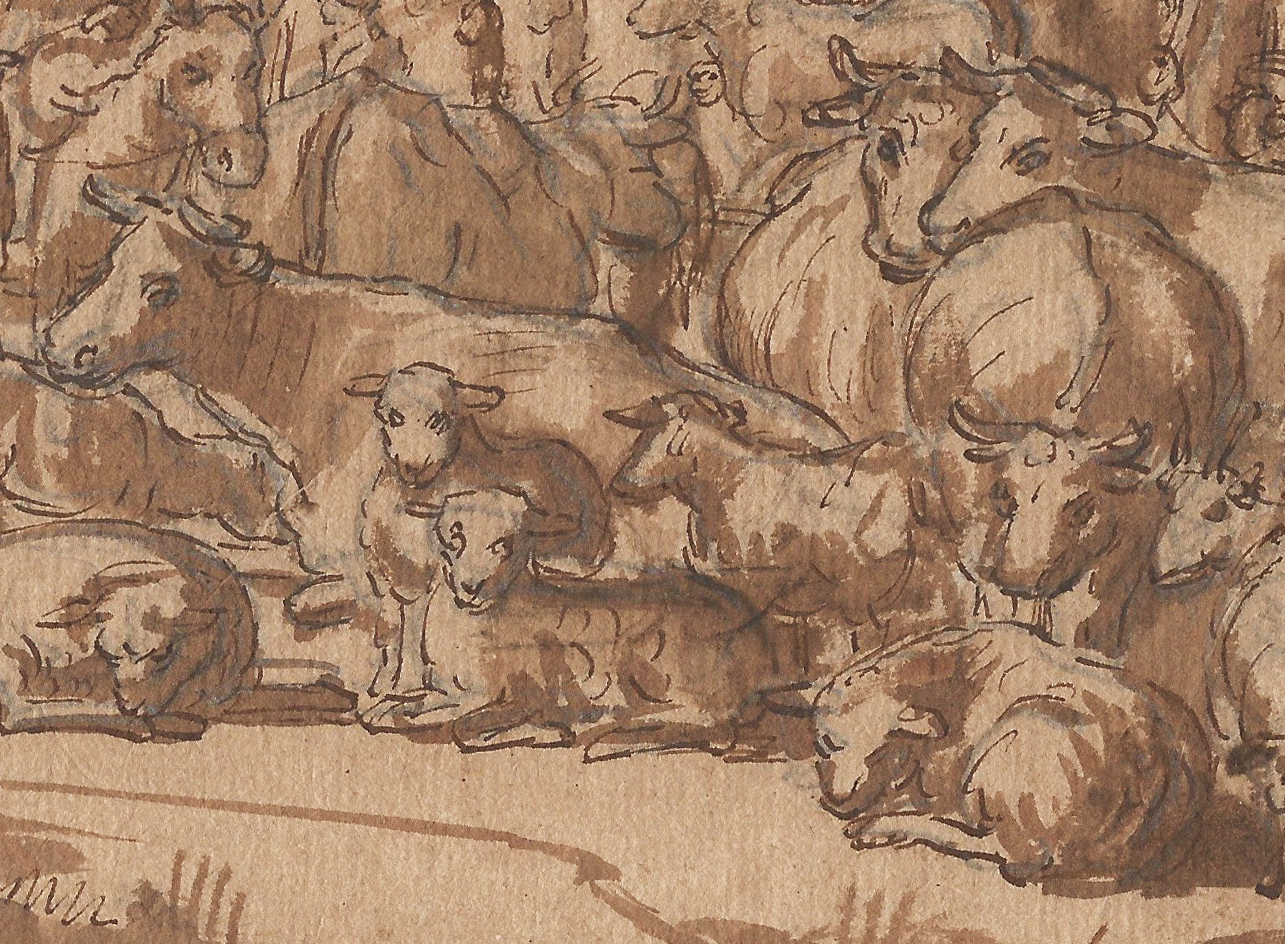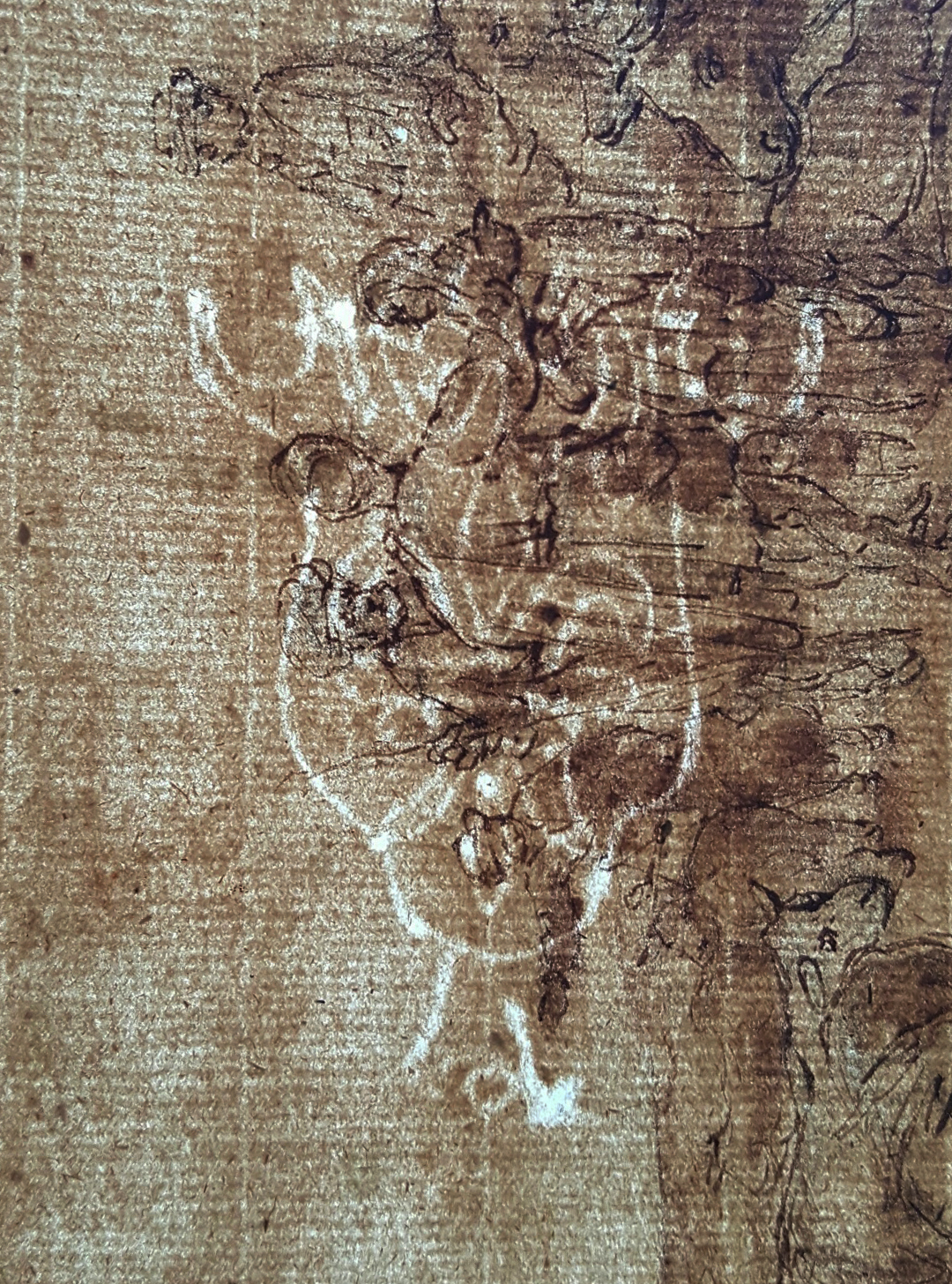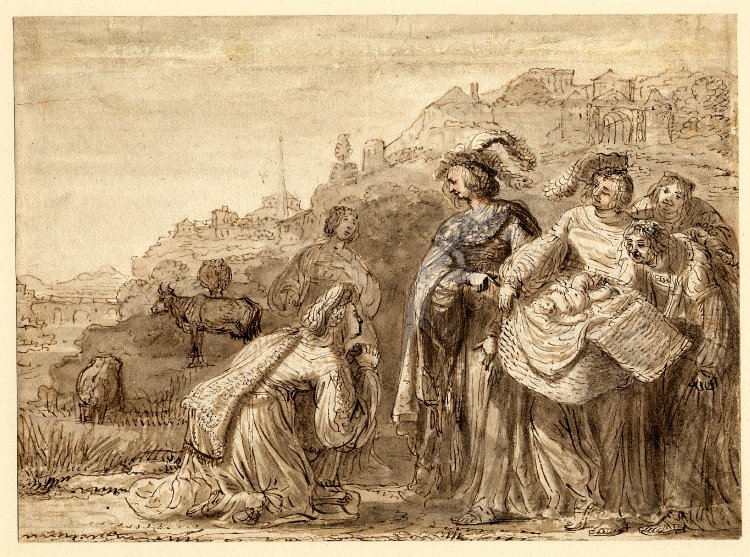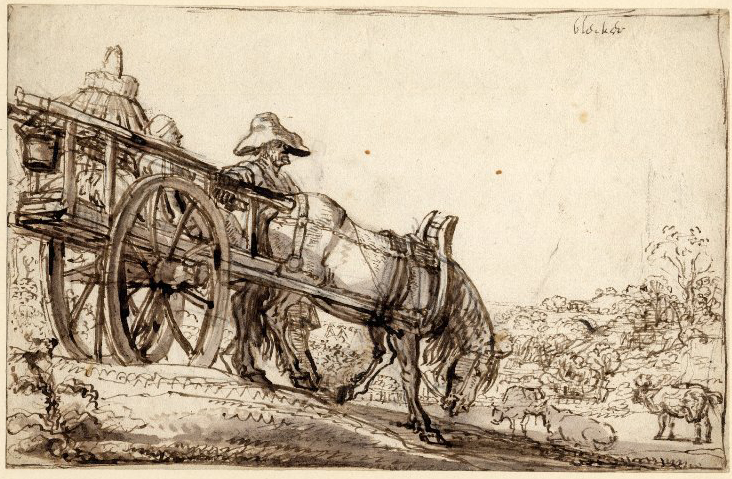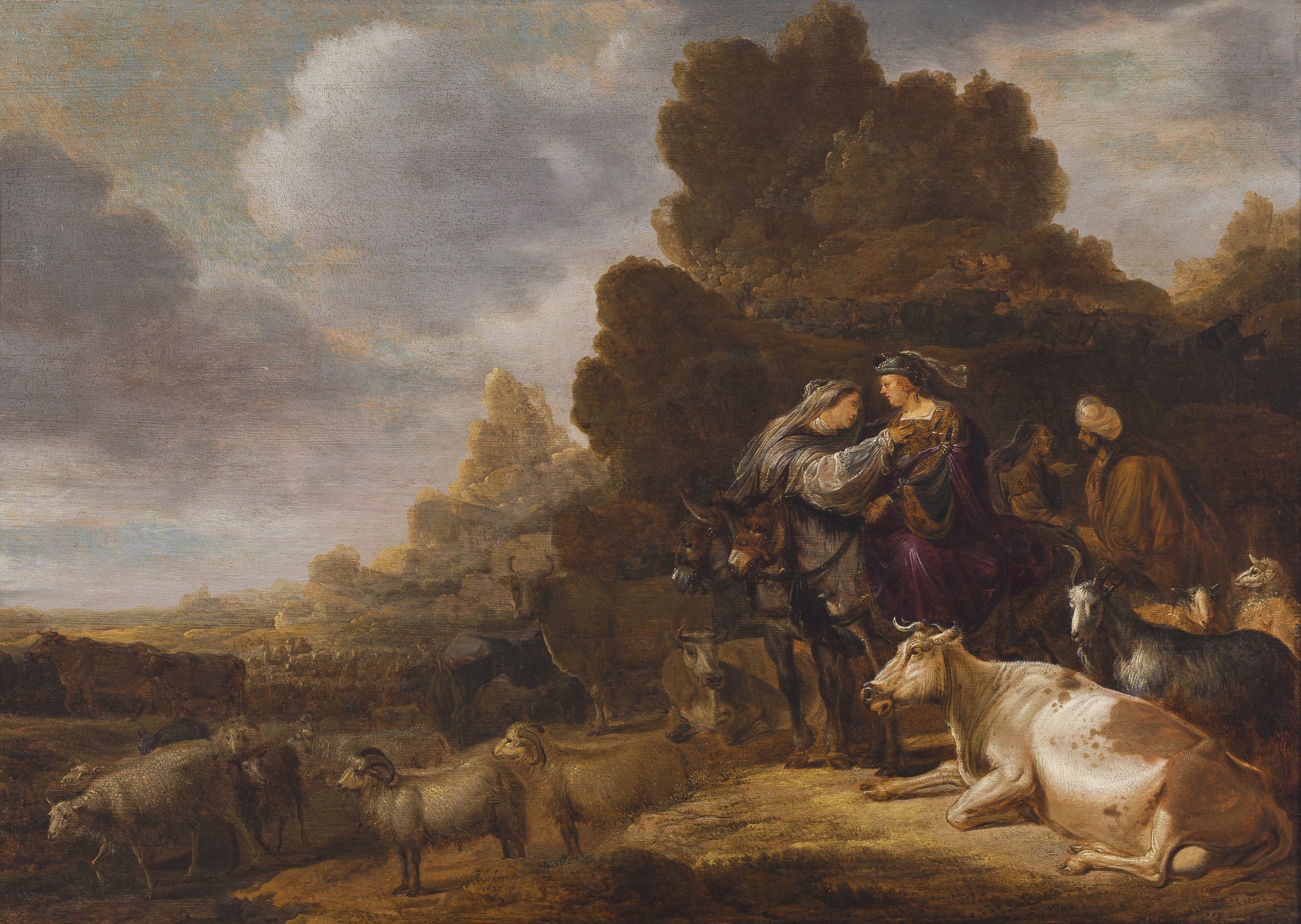Attributed to GERRIT CLAESZ BLEKER (Haarlem 1592/93 – 1656 Haarlem)
Attributed to Gerrit Claesz Bleker (Haarlem 1592/93 – 1656 Haarlem)
The Separation of Abraham and Sarah from Lot and his Wife
Black chalk, pen and brown ink, brown wash, partial brown ink framing lines, watermark Strasbourg lily in crowned shield,1 168 x 287 mm (6.6 x 11.3 inch)
Provenance
~ Pieter Langerhuizen (1839–1918) (Lugt 2095)
~ Private collection, The Netherlands
***
Gerrit Claesz Bleker was born in Haarlem around 1592 and was most probably taught by Claes Moeyaert (1591–1669).2 Bleker was first mentioned as an independent painter in 1622 and became a member of the guild of St Luke in 1634. By 1625 he was already settled as a painter of landscapes in Haarlem, and was mentioned as such in the description of the town by Samuel Ampzing of 1628, together with Salomon van Ruysdael.3 Together with his brother Jan, he was a musketeer in the St Joris civic guard. From around 1634 to 1654 he lived and worked in Amsterdam on the Keizersgracht; he then bought a country house in Groenendaal, near Heemstede, named ‘De Driesprongh’ from Pieter van de Venne, a cousin of Bartholomeus van der Helst. A neighbouring house, ‘Het Lam’, was owned by Jan Miense Molenaer and Judith Leyster. The artist’s son Dirk Bleker also became a painter, and his daughter Maria married the horse painter Jacobus Koolen.
Bleker is little known as a draughtman. Only a few sheets by him are preserved in the major European print rooms. Two drawings by him are in the British Museum, London, one sheet depicting The Finding of Moses (fig.),4 and A Peasant and a Horse-Drawn Cart (fig.).5 The latter sheet is a preparatory study for Bleker’s etching of 1643 (Hollstein 12). Another preparatory study for an etching, Landscape with a Piping Shepherd (Hollstein 6) is in the Frits Lugt collection, Fondation Custodia, Paris.6 The quirky use of the pen, the typical characterisation of the animals and the lightly washed sky that can be observed in our drawing can all be compared to features in the London and Paris sheets. The composition is similar to a painting by Bleker dated 1637, representing the same rarely depicted Biblical subject, and could possibly be primo pensiero for this painting, which is also in the collection of White Rose Fine Art, and can be found here (fig.).7
In the 19th century this sheet was owned by Pieter Langerhuizen (1839–1918), nephew of the celebrated collector Jacob de Vos. According to Lugt, Langerhuizen was one of the ‘derniers collectionneurs de la vieille marque’, living in his town residence at Herengracht 458 in Amsterdam.
We are grateful to Dr Martin Royalton-Kisch, formerly curator of drawings at the British Museum, for attributing this sheet to Gerrit Claesz. Bleker.8
1. Comparable but not identical to a watermark in a drawing by Moeyaert in the Rijksmuseum, see M. Schapelhouman and P. Schatborn, Dutch Drawings of the Seventeenth Century in the Rijksmuseum, Amsterdam, artists born between 1580 and 1600, Amsterdam/London 1998, vol. I, cat. no. 260, p. 119, fig. W82 on p. 241. Similar watermarks were widespread during this period.
2. For the artist, see I. van Thiel-Stroman, Painting in Haarlem 1500-1850. The collection of the Frans Hals Museum, Ghent/Haarlem 2006, pp. 109-10.
3. ‘How could I overlook Bleker and Ruysdael, / Who are good in landscapes, and moreover, in figures’, cited by Van Thiel-Stroman, op. cit., p. 109.
4. Black chalk, pen and brown ink, brown wash, 232 x 317 mm; inv. no. SL,5236.123; A.M. Hind, Catalogue of Dutch and Flemish Drawings preserved in the Department of Prints and Drawings in the British Museum, 4 vols, London 1915-31, cat. no. 1.
5. Black chalk, pen and brown ink, brown wash, 193 x 299 mm; inv. no. SL,5236.42; Hind, op. cit., cat no. 2.
6. Pen and brown ink, brown, grey and green wash, 142 x 212 mm; inv. no. 1972-T.37; exh. cat. Acquisitions, Paris (Fondation Custodia) 1974, cat. no. 4.
7. Oil on panel, 57 x 79 cm; private collection, The Netherlands; see C. Tümpel, Het Oude Testament in de Schilderkunst van de Gouden Eeuw, exh. cat. Amsterdam (Joods Historisch Museum) and Jerusalem (Israel Museum) 1991, p. 165, fig. 109.
8. Email correspondence, 20 December 2016. Alternatively Dr Royalton-Kisch thought it could be attributed to Moeyaert.
